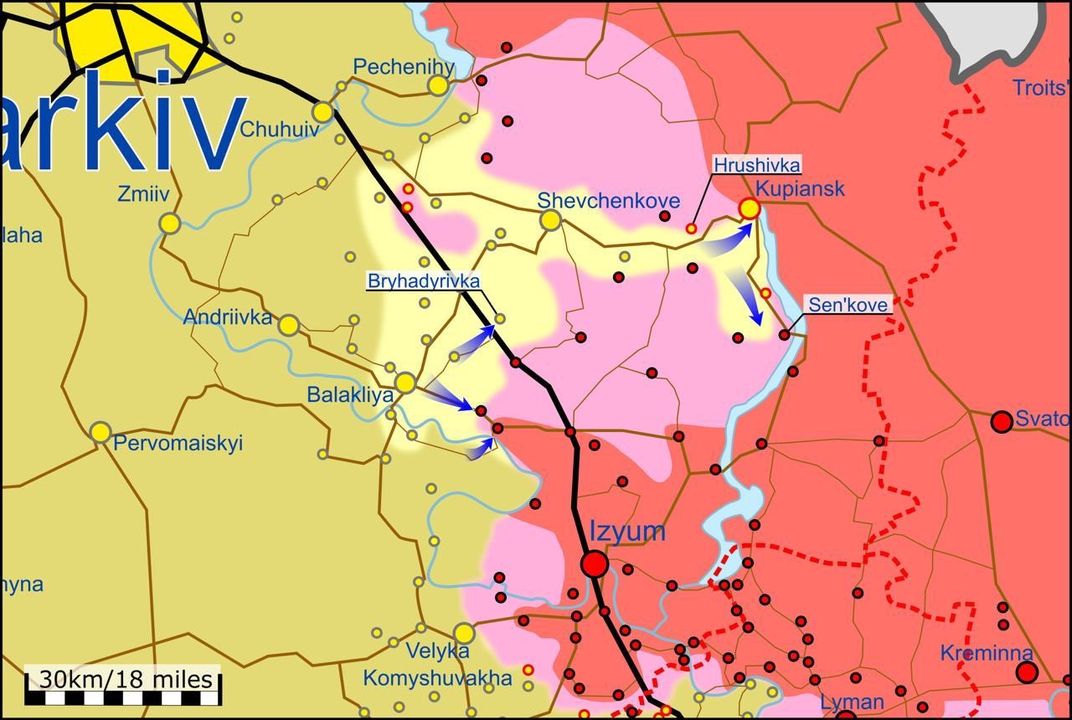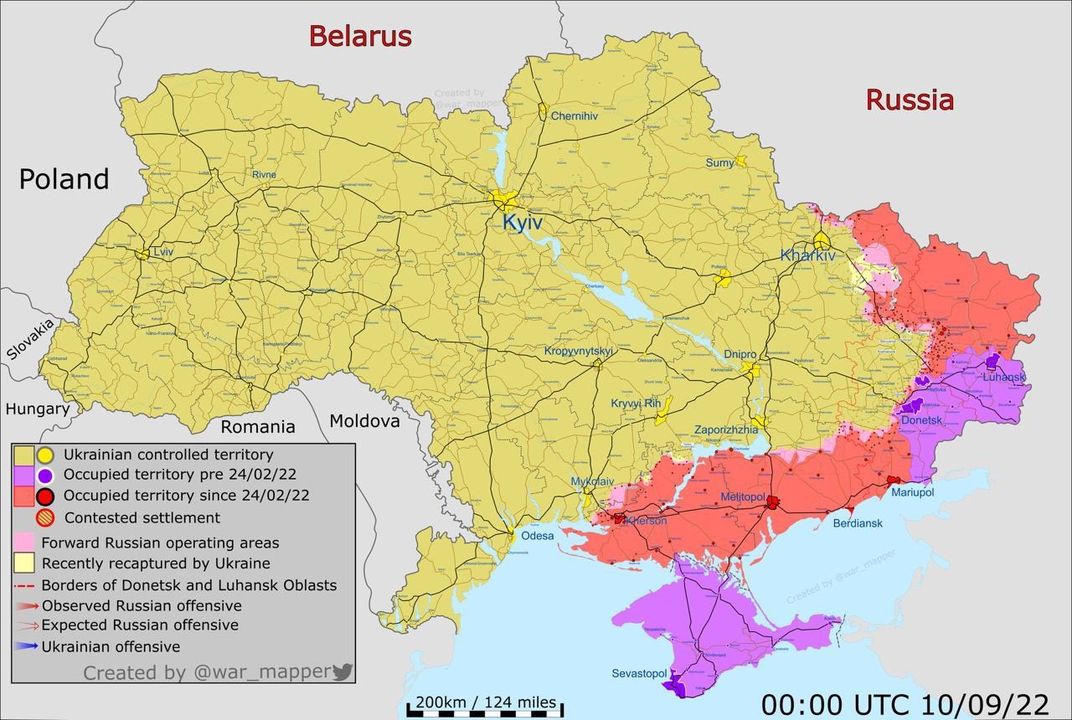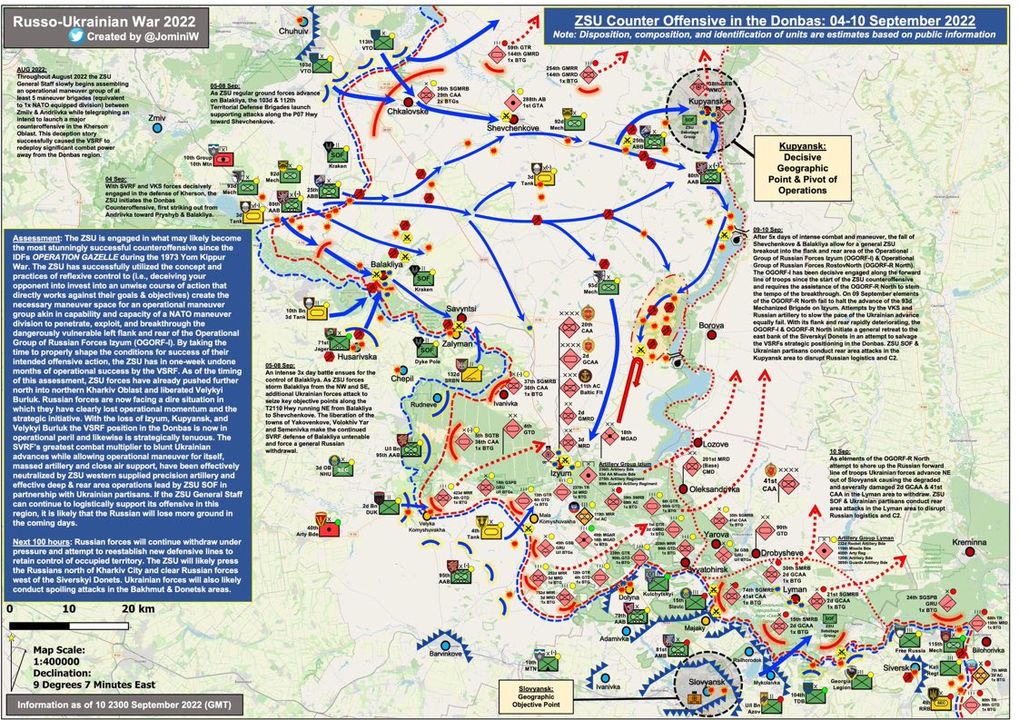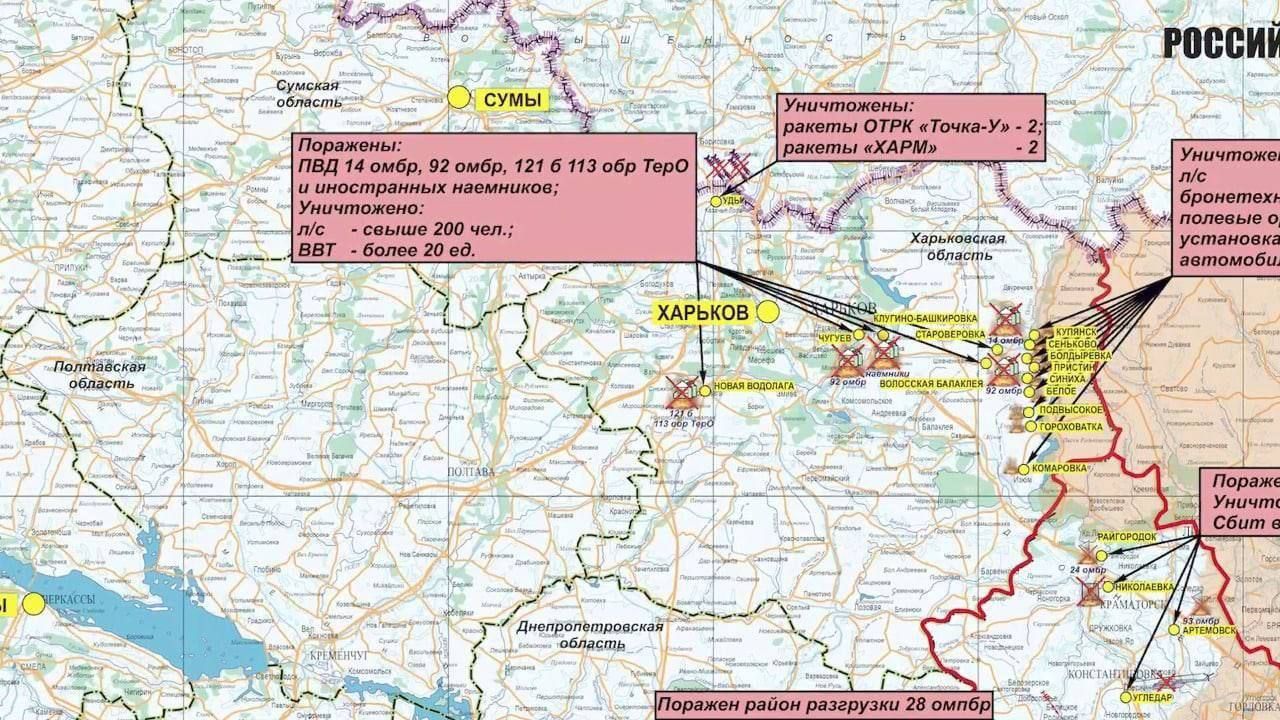Ukraine Update: Day 201
Kherson Oblast

The Ukrainian offensive in the region is still ongoing. Ukrainian artillery is still working uptempo, but the pace of advance has slowed down. Oleksandrivka, between Kherson and Nikolayev, was apparently retaken by the Ukrainians, although this information is disputed. This settlement has changed hands several times in the past 6 months. There is a lot of confusion regarding The Davydiv Brid bridgehead: Some sources indicate Ukrainian troops are consolidating and slowly expanding the bridgehead. Although this morning, Twitter was alive with rumours saying that the Ukrainians have achieved a breakthrough and have advanced all the way to Nova Khakovka!
This would mean the Ukrainians are in control once more of the water flowing into Crimea and are in a position to flank Kherson and drive a wedge through the Russian-held territory between the Kherson Oblast and the Zaporizhzhia Oblast. However, Twitter is always full of rumours and there is no confirmation. The last time we checked, the Ukrainian lines were 50km away from the Nova Khakovka bridge.
Kharkiv Oblast

What we have seen here is a complete Ukrainian breakthrough into Russian lines. The Ukrainians attacked Balakleya on the 7th of September. The Russian garrison initially held out. When the Ukrainians failed to punch through, they simply flanked and bypassed the town, forcing the Russian garrison to withdraw or face isolation from their own lines. By the 8th of September, the Ukrainians had advanced at least 50km into the Russian rear in the direction of Kupiansk.
The reasons behind this breakthrough? We have long stated that Moscow’s refusal to mobilise hampered the Russian armed forces in its task, meaning they simply don’t have the manpower required to fulfil the mission issued by their leadership. 200,000 men is simply insufficient to hold a front 1,100km long and something had to give.
The Donbass would have been a tough nut to crack for the Ukrainians because this is where the Russians have concentrated most of their manpower and firepower. However, the Ukrainians did strike in Balakleya, which was a zone lightly held by the Russians: It seems the whole region was guarded by DPR/LPR reservists and Rosvgardia militiamen. Those “guards” held in Balakleya but folded elsewhere, causing a domino effect. It also seems that those Russian lines were held pretty lightly, relying on a network of small outposts and garrisons. The Russian lines in the area were not properly layered, relying on a “thin crust”.
Balakleya and Kupiansk are the main Russian logistics nodes for keeping the Izyum salient resupplied. With their rear folding and threatened and Izyum at risk of being enveloped, Russian troops had to react fast: They started to pull back.
Resupply and Reinforcements
A fair few Russian/pro-Russian channels were pretty angry and vocal by the 9th of September, stating that it took the Russian command 3 days to react and send in reinforcements toward Kharkiv. This anger ignored the fact that Moscow relies on a small pool of reserves due to its refusal to mobilise its armed forces. In any case, some of those reinforcements started to arrive in the Russian rear areas on the 9th. Mi-26 heavy lift helicopters were involved in ferrying troops and hardware, highlighting a sense of urgency (Russia operates only a handful of those).
Ukrainian forces targeted the bridge over the Oskil river, in Kupiansk, on the 9th of September, again hindering Russian logistics immediately behind the front. Said Ukrainian forces entered Kupiansk (West bank of the Oskil river) on the 10th of September, with Russian troops still inside the city and still in control of the east bank of the Oskil river.
Liman came under Ukrainian fire yesterday (10th) while Ukrainian troops pushed toward Izyum from the West. Pontoon bridges were also apparently established by the Ukrainian side over the Siversky Donets river near Liman.
Late last night, the Russian high command announced that it was “relocating” troops from the Izyum and Balakleya fronts to focus better on pursuing objectives in the Donbass. Basically, Russian forces were ordered to pull out of the Izyum salient and part of the Kharkiv Oblast to avoid encirclement. While this retreat is saving thousands of Russians and separatist servicemen from being cut off, it has wiped off months of Russian progress.
Current Situation and Predictions

This is the second time this year that Russia trades land for time and retreats from a sector. The Ukrainian advance in Kharkiv has been the biggest breakthrough of the war since the Russian breakthrough in the Kherson region in the early days of the conflict.
It seems the Russian armed forces will try and build a stable defensive line along the Oskil and Seversky Donets rivers. On the one hand, water level is relatively low on those two rivers at this time of the year. On the other hand, the retreat should have freed more troops, enabling the Russians to establish defensive lines with a higher manpower density than before. This is a race between the two armies and their attached logistics.
There have been reports of pro-Russian and Russian-speaking Ukrainian citizens fleeing east and north toward the Donbass and Russia, ahead of the arrival of Ukrainian troops.
Conflicting reports about Ukrainian presence in Liman, Svatove and Kremina. Again, all to be taken with a pinch of salt as the situation is pretty fluid and both sides are literally flooding the feed with claims and counterclaims.
Logistics and Resources

The Russian defence and Russian retreat have been covered by airstrikes, artillery strikes and missile strikes. Kramatorsk, Seversk, Kharkiv, Chuhuiv and Nikolayev were hit hard. The Ukrainian side has lost a fair amount of men and hardware in its twin offensive and has expanded a large amount of ammunition. There will come a time when they will have to stop, rest and refit. The Russian side seems to have lost hardware, too. Especially in the Kharkiv region in the early days of the offensive when Rosvgardia units gave way. Rosvgarida militiamen are not “soldiers”. They were never trained for frontline duty and should not be used as such.
While the Ukrainian offensive in the Kherson area has been so far a typical Ukrainian operation, with frontal assaults and an attempt to grind the opponent, the offensive in the Kharkiv region has had a totally different feel: Small units moving fast, Russian strongpoints were often flanked and bypassed rather than confronted frontally. Units with foreign fighters/mercenaries/volunteers were also involved in the overall operation, judging by the number of videos in the English language published on social media in the past few days.
President Putin will probably admonish his commanders for the Russian performance on the ground. Said commanders will more than likely state the obvious: The Ukrainians are not fighting alone and benefit from NATO intel gathering capabilities, logistics, hardware and targeting coordinates. Furthermore, the Russian armed forces are fighting with one hand behind its back thanks to the civilian leadership’s refusal to fully mobilise.
Miscellaneous Updates
How will the powers that be in Moscow react?
The Zaporizhzhia power plant has been completely disconnected from the Ukrainian grid, apparently. If confirmed, this would mean 20% of Ukraine plunged into darkness (and in the cold) tonight.
Great Britain recently boasted of no longer importing any Russian oil. This, however, may have been a misconception: Russian oil is still reaching British shores, but only after a few shady ship-to-ship transfers. The EU intends on banning Russian oil imports by the end of the year. Meanwhile, they’re importing near enough 1 million barrels of Russian crude a day, stocking up before the tap runs dry.
Europe is currently purchasing Russian gas, at a premium, from China. EU sanctions, it seems, are depriving European industry and citizens while simultaneously enriching Beijing. While EU countries are trying to organise themselves and share power amongst members, Berlin is still hell-bent on shutting down a perfectly working nuclear power plant by the end of this year, angering its neighbours. On the plus side, Germany agreed to place two other nuclear power plants on “stand-by”, rather than shutting them down as planned. German energy supplier VNG has applied for a bailout on Friday. It is the second German energy supplier to do so since Russia shut down gas deliveries through Nord Stream.
While European energy suppliers are suffering under the strain of high energy prices (31 UK energy suppliers have ceased to trade since the beginning of the year), oil and gas majors have been raking in profits. BP, for example, cashed in on $9 billion in profit for this year’s second quarter alone!
Ukraine was technically bankrupt in early August. Its ratings were revised when the bulk of its creditors agreed to restructure 75% of the country’s debt. Rating agencies still maintain a negative forecast for Ukraine as Kiev’s monthly budget deficit remains stable at around $5 billion.
-RBM.










